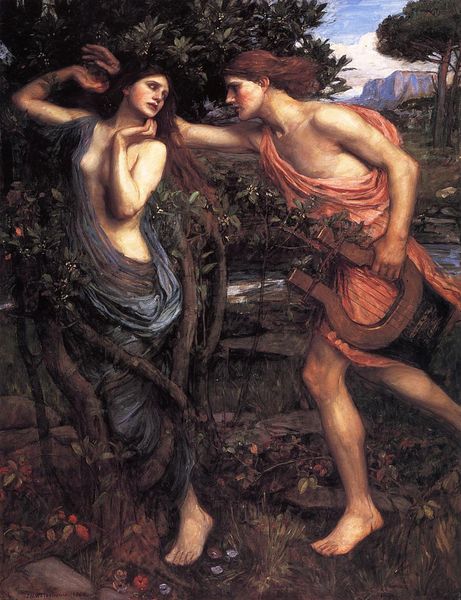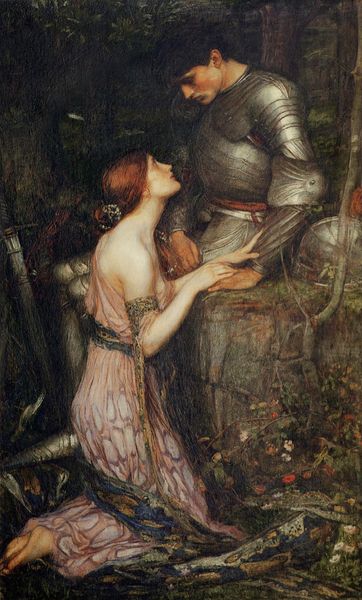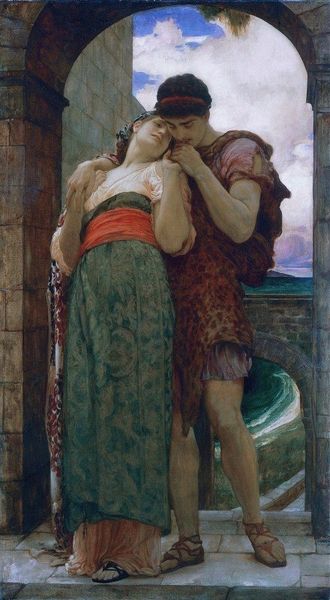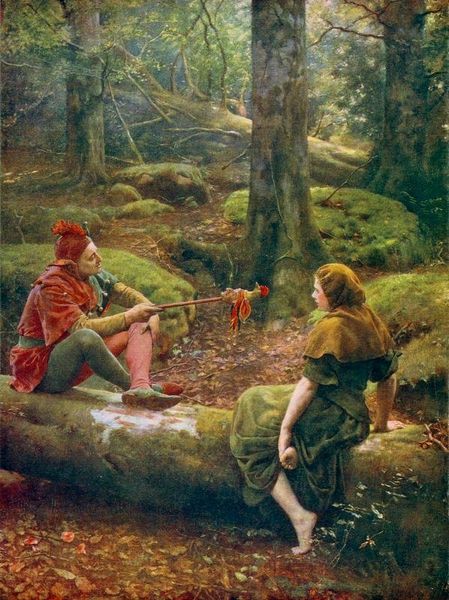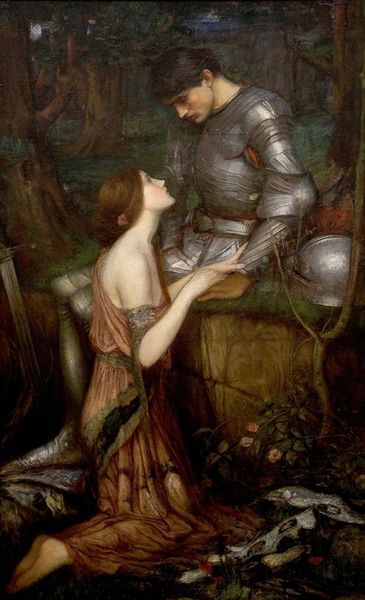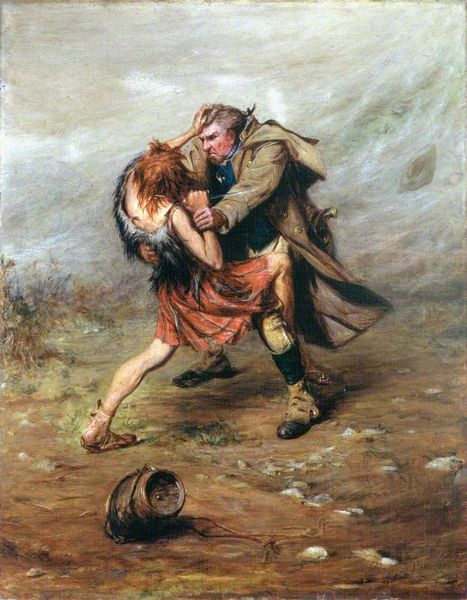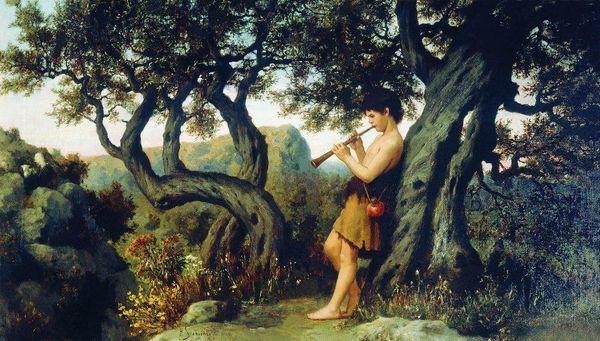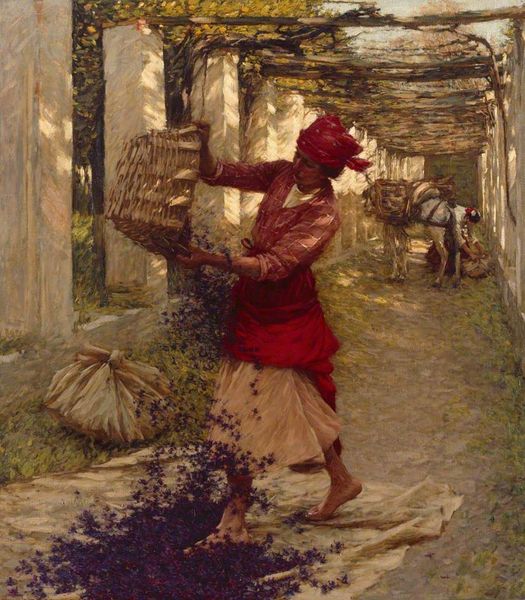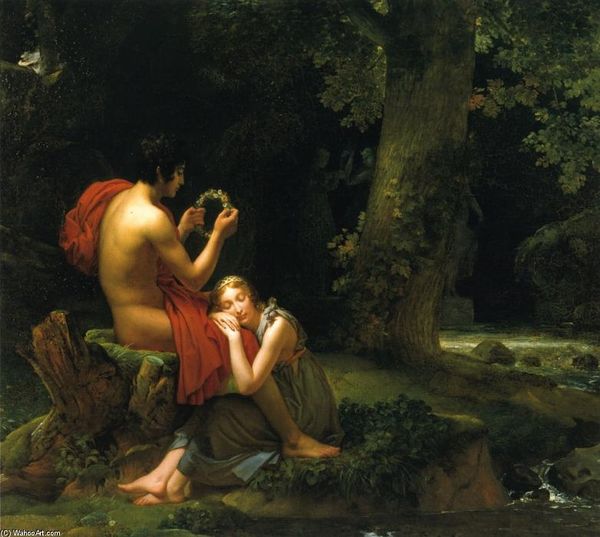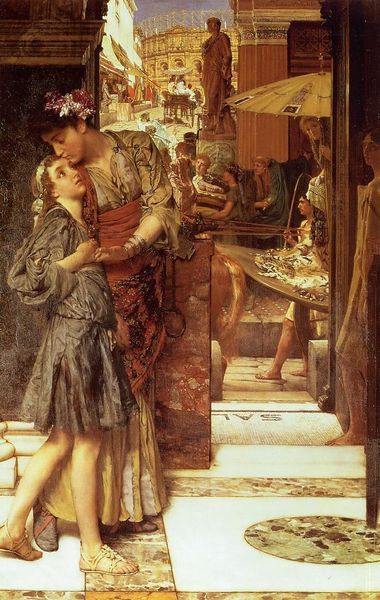
Copyright: Public domain
Curator: John Pettie crafted this oil on canvas titled “Silvius and Phoebe” in 1872. The scene presents a pastoral encounter. Editor: It evokes a distinct feeling of gentle unease, doesn't it? Like a stage set, almost artificial. The figures are positioned in a manner that hints at tension. Curator: Absolutely. It taps into a deep well of symbolic language associated with classical pastoral scenes. The characters of Silvius and Phoebe come to us from Shakespeare’s As You Like It. She’s meant to be unattainable and desired; Silvius is driven by an infatuation with an idealized vision of womanhood. Editor: Their attire alone is filled with significance, drawing from archetypes rooted in idealized Roman aesthetics. His exposed shoulders symbolize vulnerability, or openness. I also wonder if Pettie meant for his pursed hands to evoke prayer, even worship? While Phoebe looks forward with the arrow held taut, implying both direction and perhaps even the pain she inflicts? Curator: Pettie's approach speaks volumes about Victorian-era constructions of love, class and desire, mirroring the social hierarchies of the time. Phoebe's detached demeanor becomes even more potent when we contextualize it with the societal limitations placed upon women then. It reveals a discomfort around idealized gender roles, something many women then undoubtedly felt. Editor: The painterly rendering adds to that, in my view. See how the dappled light isn’t merely decorative—it seems to underscore the fractured narrative. We're placed as voyeurs of this complicated exchange between social station and romantic tension. The forest itself, usually a symbol of freedom, appears confining here, casting its own shadow. Curator: Indeed, Pettie utilizes what looks at first to be a harmless setting to underscore those societal constrictions. These aren't idealized lovers in some arcadian paradise. Their interaction lays bare power imbalances through this familiar story. It speaks to broader contemporary critiques about the male gaze. Editor: In a strange way, the lasting power of such artworks lies in their very disquiet. By dissecting its visual symbolism and historical layers, one gains new insight into this silent, yet powerfully felt standoff. Curator: I agree; by examining narratives such as these through an intersectional lens, it gives rise to productive conversations. The visual power and rich details give a way to challenge outdated norms in art as well as contemporary society.
Comments
No comments
Be the first to comment and join the conversation on the ultimate creative platform.
